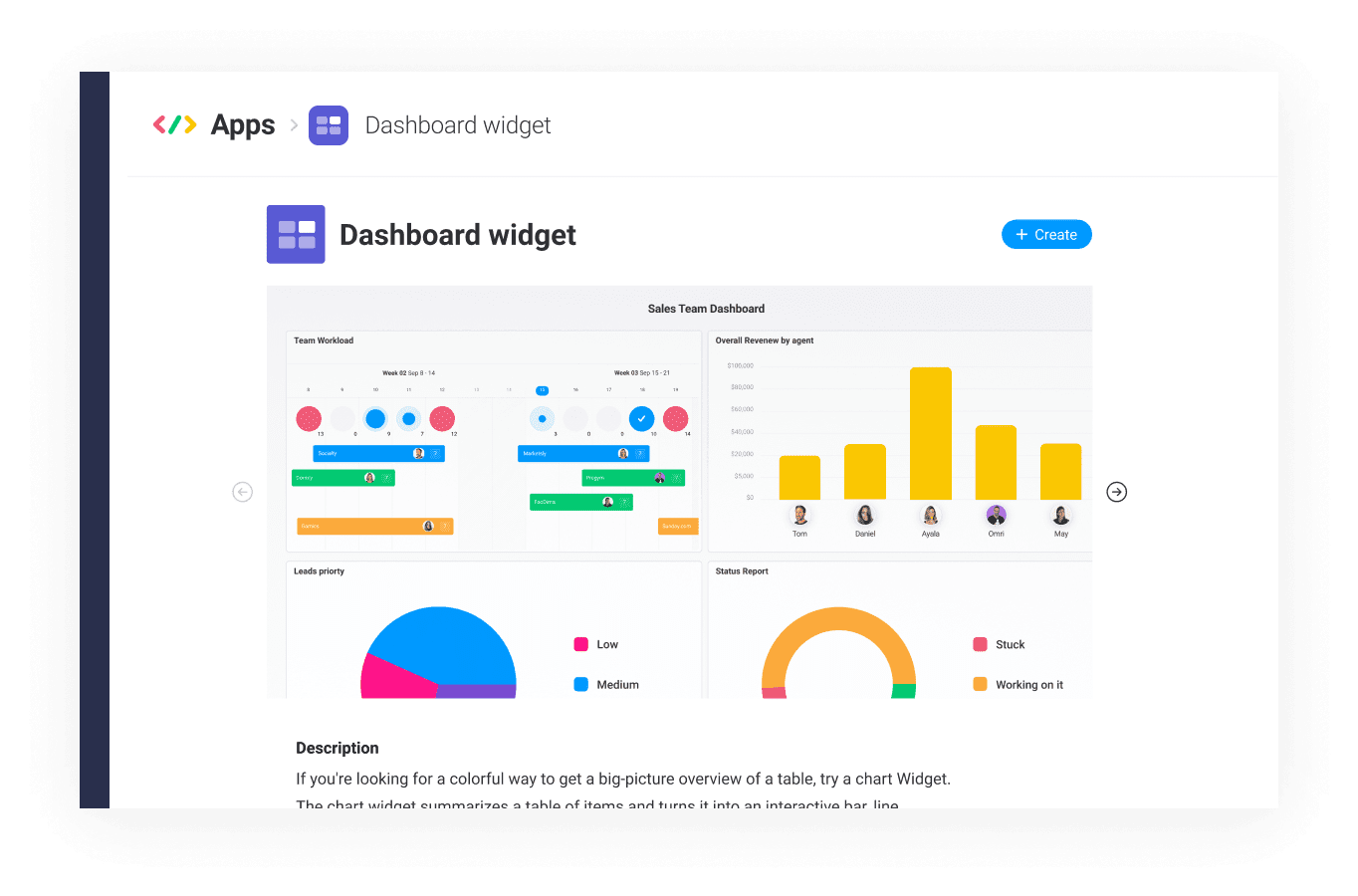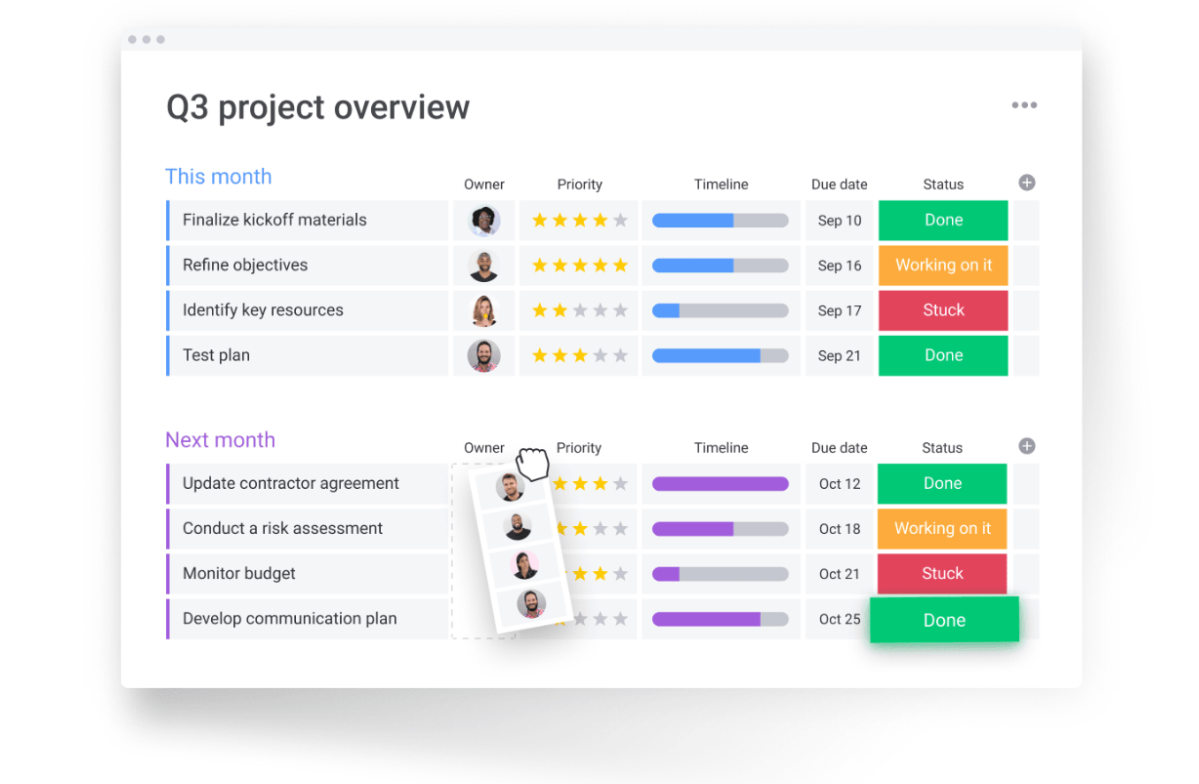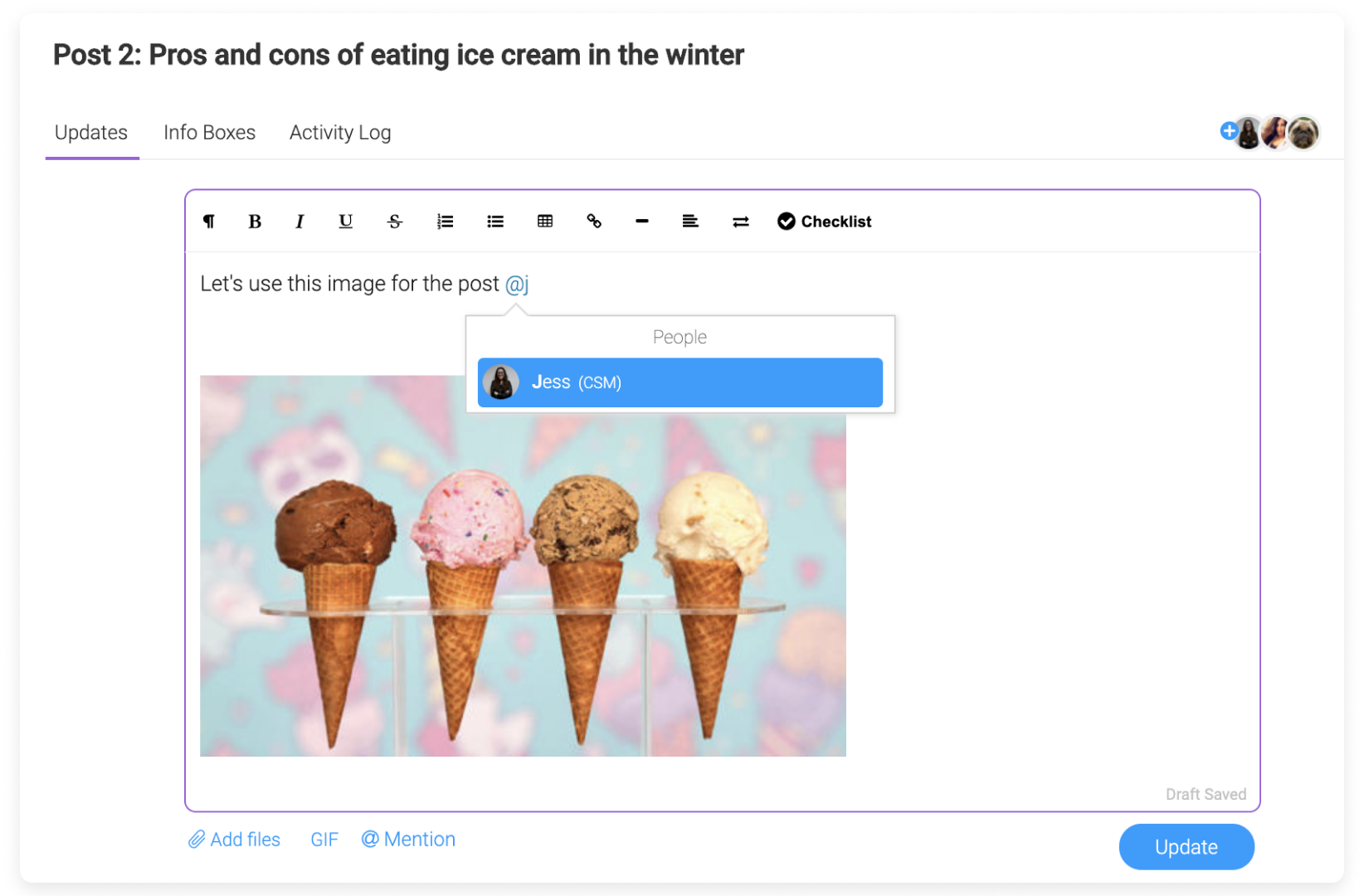In 2021, nearly half of businesses are using no-code/low-code platforms.
Of those who aren’t, 20% plan to use it in the next year.
Why?
Because no-code and low-code platforms allow anyone to create fully functional apps.
And the best part? There’s little to no coding involved.
That’s right. You don’t have to understand programming languages to create custom and effective apps.
In this article, we’re going to look at the difference between no-code and low-code platforms, some examples of both, and when you should use them.
Low-code vs. no-code: what’s the difference?
No-code and low-code are pretty similar concepts:
- They both use technology to create software applications with little to no coding.
- They both use existing frameworks and APIs (application programming interfaces) to help people create the features and functions they want.
- They both help businesses build enterprise applications.
So what’s the difference between the 2?
Let’s take a look:
| No-code development | Low-code development |
|---|---|
| No-code allows you to create functional applications without using a single piece of code. | Low-code uses an existing framework as your baseline, but you can use additional coding to create responsive apps. |
| You don’t need any understanding of coding and scripting. | You need a little understanding of coding and scripting. |
| It’s designed primarily for front-end users who have no coding experience. | It offers more customization. |
| It helps businesses with rapid application development. | It helps businesses create apps quickly, but adding the custom code may slow down the process slightly. |
Now that we’ve cleared that up, let’s look at some no-code and low-code platforms in action.
No-code platform examples
First, let’s look at the no-code platforms.
monday.com
monday.com is a Work Operating System (Work OS).
Our platform helps teams manage and streamline their workflow. You can customize your project boards, collaborate with team members, and integrate external apps and tools.
And best of all, we’re a no-code platform.
You can create an entirely custom workflow without having to touch a single piece of code.
Whether you want to streamline your communication with Quickley or create a reporting dashboard with Agile Reports, our no-code software makes it easy for you to utilize a custom app in the best possible way.
If you want to see what we have available, take a look at our selection of apps to give you some inspiration.

Webflow
Webflow is a no-code website builder. It helps businesses build and design intuitive and functional websites without having to use code.
The platform itself offers visual development, meaning you can see what your site will look like as you build it. If you use code, you don’t have this luxury.
The platform is also free to use until you make your website live, so you can test the waters and see what you think before committing to any payments.
Low-code platform examples
Now let’s take a look at some low-code platforms.
monday.com
Confused?
Don’t be.
In addition to our no-code capabilities, monday.com is also a low-code platform.
We’ve got the best of both worlds.
You can use our coding framework to create and customize apps, allowing you to create a workflow that’s perfectly suited to what you need.
So if you think that a no-code platform doesn’t quite give you the flexibility you want, monday.com could be just what you need.
Take a look at our developer page to see what kind of apps you can create with our software.

Outsystems
Outsystems provides low-code application development. More specifically, it helps professional developers create apps for business users.
Developers can integrate its code with the Outsystems framework. The development platform also uses AI-assisted tools to make the creating process more efficient.
Unlike monday.com, Outsystems is only compatible with Microsoft OS. Bear this in mind if you’re using a Mac or any cloud-based platform.
When to use a no-code platform
Now you know the difference between low-code and no-code, the next step is knowing when to use them.
We’ll start by looking at when to use no-code platforms.
You don’t have a technical background
Without some technical knowledge, it’s pretty hard to create a low-code business app. But with a no-code platform, you don’t need the coding skill of a developer.The entire app creation process becomes much more manageable — and not just because there’s no coding.
No-code platforms are designed with the user in mind. They want to make it easy for you to create the application you need, so the user interface is easy to navigate.
Take a look at the drag and drop feature, for example.
Drag and drop is a common feature in no-code tools. It allows you to easily move design blocks to customize the layout of your application.

Sounds pretty easy, right?
That’s because it is.
So if you have no experience with traditional development or coding, use a no-code app builder. There’s no coding involved, they’re efficient, and they’re easy to use.
You’re strapped for time
If you don’t have experience with coding, no-code platforms are the way to go if you’re strapped for time.
If you want to have a go at coding, it’ll take some time to get your head around it. You’ll have to learn how to code, spend some time practicing, and then figure out how to use it to create your app.
This isn’t ideal if you’re on a strict time frame.
But with a no-code platform, you can jump right in.
As we’ve already mentioned, no-code platforms are easy to use. This convenience makes the creation process go much faster.
When to use a low-code platform
Now let’s outline when using a low-code platform is the right way to go.
You need a little customization
Low-code platforms offer a bit more in terms of customization.
You have more flexibility with what you can create in comparison to a no-code platform.
That’s not to say you don’t have any customizable features with no-code tools. You do. But you’re limited to a certain extent.
With low-code, if you can code it, you can create it.
So, if you need that extra layer of modification, consider using low-code to create a custom application.
You have some technical knowledge, but not a lot
You don’t have to be an expert developer to use low-code platforms, but you need some technical knowledge.
Unlike no-code, you can’t jump into low-code platforms quite as freely. You need to have a certain understanding of coding and scripting to use the platform.
Having said that, if you don’t have any technical knowledge, but you want to use a low-code platform, nothing is stopping you.
Low-code platforms are an ideal stepping stone into full-blown coding. In fact, research shows that 70% of low-code users learned how to code in 1 month or less with a low-code platform.
So if you want something that offers more than no-code, or you want to learn how to start implementing code, a low-code platform could be your best bet.
monday.com: the best of both worlds
As you already know, monday.com is a Work OS.
So let’s take a look at how our software makes the development process easy for everyone — no matter what your technical background might be.
Use both no-code and low-code software
With monday.com, you can choose to use no-code or low-code depending on what you want to achieve and your level of technical expertise.
We have no-code building blocks people can use to create and customize apps, and we have the functionality for developers to create their own.
Put simply, you can create any feature or functionality you need.

Create the perfect workflow
When it comes to managing your workflow, monday.com has got you covered.
Our platform helps teams build the perfect workflow from end to end.
How?
With our customizable features.
You can customize your board views, add automation to your workflow — both pre-made or made from scratch — and even integrate with third-party platforms.

Collaborate with your team
At monday.com, we’re big on collaboration.
Why?
Because we want teams to work together as efficiently as possible.
That’s why we’ve got a variety of features that help teams collaborate.
For example, a user can add comments to tasks, share files and images, and provide updates to their entire team in one go.

Try low-code/no-code with monday.com
By now, you should have a solid understanding of the difference between low-code and no-code.
If you want to try them both, sign up for monday.com. Whether you’re a software developer or a complete technophobe, our platform has everything you need to create a streamlined and efficient workflow.
We’d recommend starting with our single project template to get things moving.

